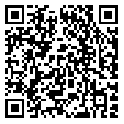Regehr 等 - 2013 - Interventions to reduce stress in university stude
{{`发布时间:2023-3-19`}}
|
云展网期刊杂志制作
产品说明书
其他
Regehr 等 - 2013 - Interventions to reduce stress in university stude
百万用户使用云展网进行网络电子书制作,只要您有文档,即可一键上传,自动生成链接和二维码(独立电子书),支持分享到微信和网站!
其他案例
百万用户使用云展网进行网络电子书制作,只要您有文档,即可一键上传,自动生成链接和二维码(独立电子书),支持分享到微信和网站!
免费制作
{{modalTitle}}
{{item.title}}
x
{{item.desc}}
{{item.title}}
{{toast}}



